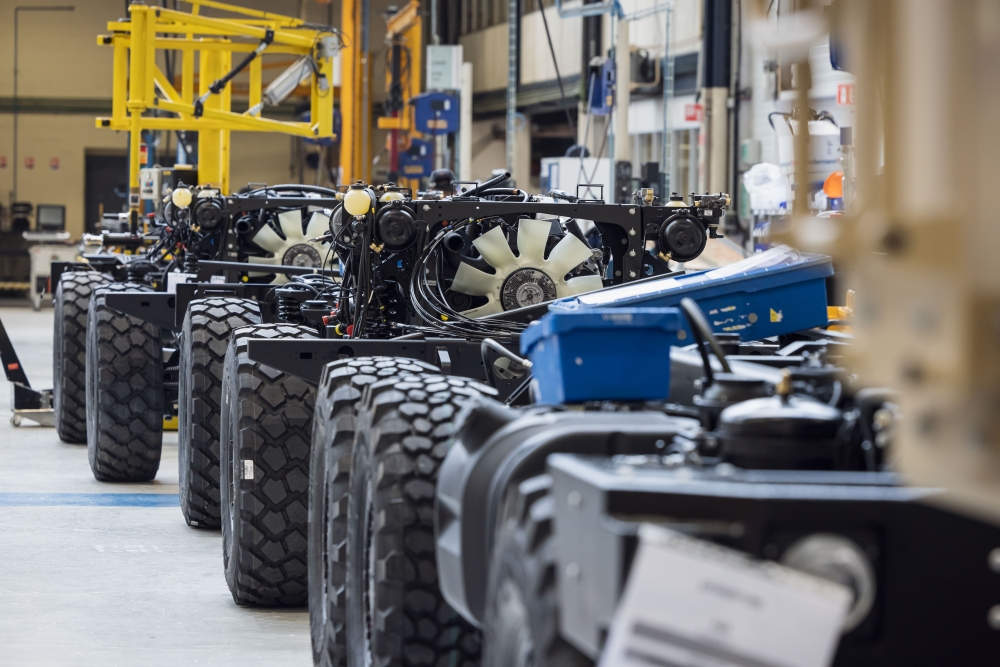
During the new year speech to the French Armed forces (Voeux aux Armées), on 30 January, Emmanuel Chiva, the chief of the defence procurement and technology agency (DGA), outlined the agency’s main commitments for 2025, stressing the need to adjust its structure to find a better balance between long-term commitments and contingency and/or emergency programmes.
The ideas to ameliorate the response to current threats probably were the most interesting part of the speech. The war in Ukraine demonstrated the need to shift “from a stock-based approach, in which a system is conceived to fulfil a specific function within a specific armed force, to a flow-based approach useful for all armed forces”, Chiva said.
Following President Macron’s calls for a shift toward a “war economy” in June 2022 and a relaunch of national procurement, French defence companies stepped up their production pace. KNDS Ammo France has multiplied by 60 its production of 155-mm shells, Dassault Aviation will soon produce three instead of one RAFALE per month, and MBDA will need “only” 18 months to produce ASTER missile batteries by 2026, compared to today’s 42 months. These are significant improvements, considering that “producing quickly and in big quantities has not been a criterion for us so far”, as Chiva stressed.However, “a flow-based approach for quick mass production must become new criterion to meet”, he added. Exploiting the production capability of the civil sector, more accustomed to rapidly deliver significant quantities, might be of great help.
To this end, Chiva launched a call for ideas for the quick production of several thousands of long-range loitering munitions (+100 km), to be delivered to Kyiv in a few months, and of a thousand of low-cost drones for training, with deliveries expected from 2026. It is unclear whether a French automotive company might be involved in the production of loitering munitions, and no contracts have been signed yet. Should the news be confirmed, this would not be the first contribution of civilian companies to defence efforts, as Michelin produced aircrafts and Renault produced tanks during WWI. More recently, US company Anduril demonstrated that several defence items can effectively be produced borrowing from civil technologies and production capabilities. (On FW MAG-1 2025, available online, the hypotheses that the automotive industry could contribute to flesh out defence production capabilities has been explored in detail).
Chiva also outlined other measures intended to ameliorate DGA’s efficiency. To quickly respond to armed forces’ needs, the Agency plans to increase off-the-shelf purchases and establish cross-institution teams (so far with members of the Navy and the Armies’ chief of staff) to make procurement more agile and simplify existing procedures. The DGA also plans to pursue the ongoing efforts to sustain the 4,500 SMEs belonging to the defence sector, whose role might be crucial to ameliorate production, for instance when it comes to proposing “low-cost designs”.
Space, AI and quantum computing are the main future challenges the DGA wants to focus on in 2025. Looking at space, the launch into orbit of the third generation Earth satellite, named Optical Space Component (Composante Spatiale Optique, CSO-3), is scheduled on 26 February – four years after the expected replacement of military satellites Helios 2A and 2B. The DGA will also create a laboratory dedicated to quantum computing. The agency is already in charge for the Proqcima program, aimed at developing two prototypes of French-designed universal quantum computers by 2032.
A partnership is in place with five specialised companies (Pasqal, Alice&Bob, C12, Quandela, and Quobly), with the agency expected to select the most promising three by 2028, then the best two in the following years. The year 2025 will also be crucial for the strategic programmes for the next decade, including ArianeGroup M51.4 submarine-launched ballistic missiles, MBDA hypersonic air-to-ground nuclear cruise missile (Air-Sol Nucléaire de 4ème génération, ASN4G), third generation nuclear ballistic missile submarines (Sous-Marin Nucléaire Lanceur d'Engins de Troisieme Génération, SNLE 3G), and the next generation aircraft carrier (Porte-avions de nouvelle generation, PA-NG).








.png)
